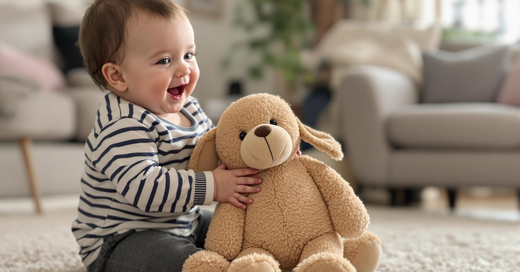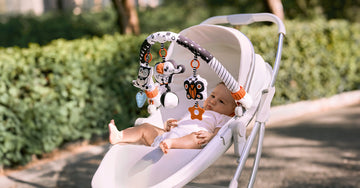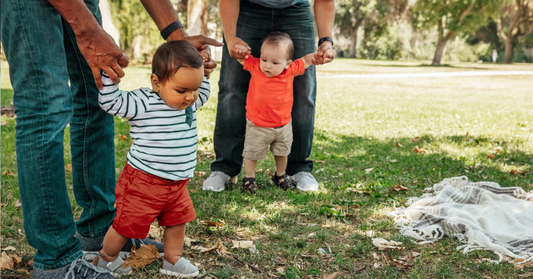Stellen die CE -Zertifizierung für Spielzeug sicher, dass sie BPA und Phthalate kostenlos sind?

Die Sicherheit von Kinderspielzeug hat für Eltern oberste Priorität. Angesichts der Vielzahl an Zertifizierungen kann es schwierig sein, die einzelnen Zertifizierungen zu verstehen. Eine häufige Frage ist, ob die CE-Zertifizierung garantiert, dass Spielzeug frei von Schadstoffen wie BPA und Phthalaten ist. Dieser Artikel befasst sich mit den Besonderheiten der CE-Zertifizierung und ihrer Rolle beim Schutz Ihres Kindes vor diesen potenziell gefährlichen Chemikalien.
CE-Zertifizierung ist ein Zeichen, das anzeigt, dass ein Produkt die Sicherheits-, Gesundheits- und Umweltanforderungen der Europäischen Union erfüllt. Bei Spielzeugen umfasst diese Zertifizierung strenge Tests, um sicherzustellen, dass es für Kinder sicher ist. Die CE-Zertifizierung befasst sich insbesondere mit dem Vorhandensein von Schadstoffen wie BPA (Bisphenol A) und Phthalaten. Diese Chemikalien sind häufig in Kunststoffen enthalten und können bei Verschlucken oder längerem Hautkontakt Gesundheitsrisiken bergen.
Das Verständnis der CE-Zertifizierung ist entscheidend Für Eltern, die ihren Kindern eine möglichst sichere Umgebung bieten möchten. Die Zertifizierung bietet zwar ein gewisses Maß an Sicherheit, es ist jedoch wichtig, ihren Umfang und ihre Grenzen zu kennen. Durch die Auseinandersetzung mit den Details der CE-Zertifizierung können Eltern fundiertere Entscheidungen bei der Auswahl von Spielzeug treffen, das ihren Kleinen Spaß macht und gleichzeitig sicher ist.
Was deckt die CE-Zertifizierung in Bezug auf BPA und Phthalate ab?
Problem: Eltern sind zunehmend besorgt über das Vorhandensein schädlicher Chemikalien wie BPA und Phthalate im Spielzeug ihrer Kinder und befürchten mögliche Gesundheitsrisiken.
Agitation: Die Sorge, sicherzustellen, dass Spielzeuge frei von diesen Substanzen sind, kann überwältigend sein, insbesondere angesichts der großen Produktpalette auf dem Markt.
Lösung: Die CE-Zertifizierung bietet einen umfassenden Ansatz zur Spielzeugsicherheit und geht durch strenge Tests und die Einhaltung gesetzlicher Vorschriften auf das Vorhandensein von BPA und Phthalaten ein.
Die CE-Zertifizierung umfasst Normen, die den Einsatz gefährlicher Stoffe in Spielzeug einschränken. Insbesondere die europäische Spielzeugrichtlinie begrenzt den Gehalt an BPA und bestimmten Phthalaten, um die Sicherheit von Spielzeug für Kinder zu gewährleisten. Hersteller müssen diese Normen einhalten, um das CE-Zeichen zu erhalten. Dazu werden Materialien und Fertigprodukte auf ihre Konformität geprüft. Dieses strenge Verfahren trägt dazu bei, das Risiko einer Belastung mit schädlichen Chemikalien zu minimieren und gibt Eltern Vertrauen in die Sicherheit zertifizierten Spielzeugs.
Gibt es strengere CE-Zertifizierungsvorschriften für Spielzeug für Kinder unter 36 Monaten?
Problem: Eltern von Säuglingen und Kleinkindern sind besonders besorgt über die Sicherheit der Spielzeuge, mit denen ihre kleinen Kinder spielen, da ein höheres Risiko des Erstickens und der Aufnahme schädlicher Substanzen besteht.
Agitation: Das besondere Verhalten von Kindern unter 36 Monaten – beispielsweise das Stecken von Spielzeug in den Mund – erhöht das Risiko, schädlichen Chemikalien ausgesetzt zu sein, sodass herkömmliche Sicherheitsmaßnahmen als unzureichend erscheinen.
Lösung: Die CE-Zertifizierung beinhaltet strengere Vorschriften für Spielzeug für Kinder unter 36 Monaten und gewährleistet verbesserte Sicherheitsstandards zum Schutz der schwächsten Altersgruppe.
Das CE-Zertifizierungsverfahren berücksichtigt, dass Kinder unter 36 Monaten aufgrund ihrer Entwicklungsgewohnheiten, wie z. B. häufiges In-den-Mund-Nehmen und Hantieren mit Spielzeug, einem höheren Risiko ausgesetzt sind, schädlichen Substanzen ausgesetzt zu sein. Daher schreibt die europäische Spielzeugrichtlinie strengere Grenzwerte für die Konzentration von BPA und Phthalaten in Spielzeugen für diese Altersgruppe vor.Darüber hinaus müssen diese Spielzeuge strengeren Tests unterzogen werden, um sicherzustellen, dass sie nicht nur frei von übermäßigen Mengen dieser Chemikalien sind, sondern auch so konstruiert sind, dass das Risiko, dass sich Kleinteile lösen oder eine Erstickungsgefahr darstellen, minimiert wird. Diese erhöhte Kontrolle stellt sicher, dass Spielzeug für jüngere Kinder eine sicherere Spielumgebung bietet und den spezifischen Bedürfnissen und Risiken der frühkindlichen Entwicklung gerecht wird.
Wie schneidet die CE-Zertifizierung im Vergleich zu anderen internationalen Spielzeugsicherheitsstandards ab?
Problem: Die verschiedenen internationalen Sicherheitsnormen für Spielzeuge zu kennen, kann verwirrend sein und Eltern unsicher machen, welchen Zertifizierungen sie vertrauen können.
Agitation: Die mangelnde Klarheit zwischen den verschiedenen Prüfzeichen kann zu Unsicherheit und Zögern beim Kauf von Spielzeug führen und so den Erwerb sicherer Produkte möglicherweise verzögern.
Lösung: Ein Vergleich der CE-Zertifizierung mit anderen globalen Standards wie den US-amerikanischen CPSC- und EU-EN-Standards kann ihre jeweilige Rolle bei der Gewährleistung der Spielzeugsicherheit verdeutlichen.
Die CE-Zertifizierung ist einer von mehreren internationalen Standards zur Gewährleistung der Spielzeugsicherheit. In den USA erlässt die Consumer Product Safety Commission (CPSC) Vorschriften, die Grenzwerte für BPA und Phthalate enthalten, ähnlich dem Ansatz der EU. Die EN-Normen, an denen sich die CE-Zertifizierung orientiert, sind weltweit anerkannt und gelten oft als strenger. Das Verständnis der Nuancen zwischen diesen Normen hilft Eltern, das höchste Maß an Sicherheit zu erkennen. Während sich sowohl die CE- als auch die CPSC-Zertifizierung auf Schadstoffe beziehen, erfordert die CE-Zertifizierung oft umfassendere Tests und ist daher ein zuverlässiger Indikator für die Sicherheit eines Spielzeugs.
Wie können Eltern die Echtheit von CE-zertifiziertem Spielzeug überprüfen?
Problem: Der Markt ist überschwemmt mit gefälschten Produkten, die fälschlicherweise das CE-Zeichen tragen. Für Eltern ist es daher schwierig, sicherzustellen, dass sie wirklich zertifiziertes Spielzeug kaufen.
Agitation: Der Kauf eines gefälschten CE-zertifizierten Spielzeugs gefährdet nicht nur die Sicherheit des Kindes, sondern untergräbt auch das Vertrauen der Eltern in zertifizierte Produkte, was zu Frustration und potenziellen Sicherheitsrisiken führt.
Lösung: Durch die Implementierung effektiver Überprüfungsmethoden und den Kauf bei seriösen Quellen können Eltern authentisches CE-zertifiziertes Spielzeug sicher erkennen.
Eltern können die Echtheit von CE-zertifiziertem Spielzeug überprüfen, indem sie auf die Platzierung des CE-Zeichens achten. Stellen Sie sicher, dass es gut sichtbar ist und gegebenenfalls die entsprechende Identifikationsnummer der benannten Stelle beigefügt ist. Der Kauf von Spielzeug bei seriösen Händlern und direkt beim Hersteller verringert außerdem das Risiko, auf gefälschte Produkte zu stoßen. Eltern sollten außerdem die Produktdokumentation und Sicherheitszertifikate des Herstellers prüfen. Online-Datenbanken und offizielle EU-Ressourcen können genutzt werden, um die Gültigkeit des CE-Zeichens auf bestimmten Produkten zu bestätigen. Auf diese Weise können Eltern sicherstellen, dass das von ihnen gekaufte Spielzeug die strengen Sicherheitsstandards für die CE-Zertifizierung tatsächlich erfüllt.
Welche Einschränkungen birgt die CE-Zertifizierung beim Schutz von Kindern vor schädlichen Chemikalien?
Problem: Obwohl die CE-Zertifizierung viele Aspekte der Spielzeugsicherheit abdeckt, können dennoch Lücken bestehen, die Kinder der Gefahr der Exposition gegenüber schädlichen Chemikalien aussetzen.
Agitation: Sich ausschließlich auf die CE-Zertifizierung zu verlassen, ohne deren Einschränkungen zu kennen, kann ein falsches Sicherheitsgefühl vermitteln und möglicherweise andere Risiken im Zusammenhang mit den Materialien und der Verwendung des Spielzeugs übersehen.
Lösung: Das Erkennen der Grenzen der CE-Zertifizierung und die Einführung zusätzlicher Sicherheitsmaßnahmen können einen umfassenderen Ansatz zum Schutz von Kindern vor schädlichen Substanzen bieten.
Die CE-Zertifizierung stellt in erster Linie sicher, dass Spielzeug keine Substanzen wie BPA und Phthalate über den vorgeschriebenen Grenzwerten enthält. Sie deckt jedoch möglicherweise nicht alle möglichen gefährlichen Chemikalien ab, die in Spielzeug enthalten sein können. Beispielsweise sind andere Schadstoffe wie Blei, Cadmium oder bestimmte Flammschutzmittel im Rahmen der CE-Zertifizierung möglicherweise nicht umfassend reguliert. Darüber hinaus berücksichtigt der Zertifizierungsprozess weder die langfristigen Auswirkungen noch die kombinierten Auswirkungen mehrerer Chemikalien. Um die Sicherheit zu erhöhen, sollten Eltern nach Spielzeug suchen, das mehrere Sicherheitsstandards erfüllt, solche aus natürlichen oder ungiftigen Materialien bevorzugt und sich über die neuesten Sicherheitsforschungen auf dem Laufenden halten. Die Kombination der CE-Zertifizierung mit proaktiven Sicherheitspraktiken gewährleistet eine robustere Schutzstrategie für Kinder.
Abschluss
Die CE-Zertifizierung spielt eine entscheidende Rolle bei der Gewährleistung der Sicherheit von Babyspielzeug durch die Regulierung des Vorhandenseins schädlicher Chemikalien wie BPA und Phthalate. Obwohl dies ein hohes Maß an Sicherheit bietet, ist es für Eltern, die ihren Kindern eine möglichst sichere Umgebung bieten möchten, unerlässlich, deren Umfang und Grenzen zu verstehen. Durch die Überprüfung der Echtheit CE-zertifizierter Produkte, den Vergleich internationaler Sicherheitsstandards und die Einführung zusätzlicher Sicherheitsmaßnahmen können Eltern fundierte Entscheidungen treffen, bei denen die Gesundheit und das Wohlbefinden ihres Kindes im Vordergrund stehen. Letztendlich ermöglicht ein umfassender Ansatz zur Spielzeugsicherheit Eltern, selbstbewusst Produkte auszuwählen, die das Wachstum und die Freude ihres Kindes fördern, ohne Kompromisse bei der Sicherheit einzugehen.
Weitere Artikel:
- Welchen Schaden können BPA-haltige Spielzeuge bei Babys verursachen?
- So wählen Sie sicheres Babyspielzeug aus







0 Kommentare